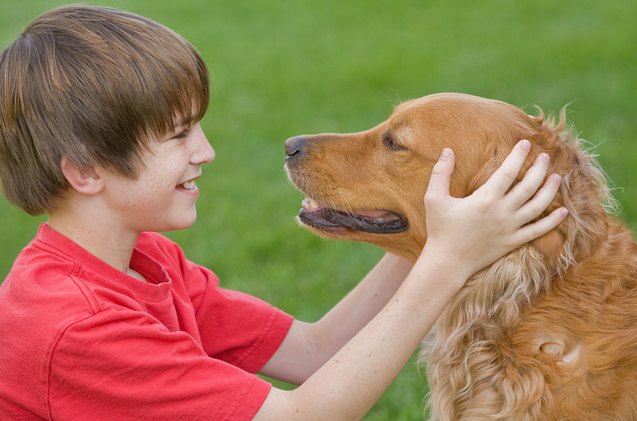Study: Family Dogs Benefit Children With Disabilities

Research based on the relationship between a 10-year-old boy and his family’s Pomeranian shows that there may be more to having a family pet than just a loving and affectionate relationship. In a study that included the collaboration of veterinary researchers from Oregon State University, Norwich University, and Massey University in New Zealand, a 10-year-old boy with cerebral palsy benefitted from an intervention program where he used his dog for assistance.
The study looked to see if intervention that included the family dog could lead to improvements in the physical activity, motor skills, and quality of life for a child with disabilities. This could possibly lead to more studies that look at improving quality of life for children with disabilities.
Related: Therapy Dogs Help Children With Autism More Than We Thought
According to Megan MacDonald, assistant professor at Oregon State, the initial findings of the study show that not only can the family dog help improve a child’s quality of life, but help them to be more active, when they otherwise might not have the opportunity to be so.
Children who have physical disabilities such as cerebral palsy don’t spend as much time participating in physical activities compared to their non-disabled peers, which generally leads to greater health concerns for those children.
The study incorporated an adapted physical activity that was assisted by the family dog in a partnership to encourage physical activity and motor skill development, as well as strengthen the human-animal connection and quality of life. Researchers believe the family dog, though untrained as a therapy dog, is a great resource because there is already a bond between the pet and his human, and both can benefit from the adapted intervention.
The child in the study participated in activities like playing fetch, brushing the dog, and marching on a balancing disc. The researchers said that the boy in the study saw the dog do some of the activities like balancing on the wobble board or balance disc, and was inspired to try himself. MacDonald said that they formed a partnership from which both benefitted.
In addition to the 60-minute sessions, the child and his dog had homework that incorporated activities such as playing fetch and walking daily. The researchers measured the activity levels with an accelerometer the boy wore. They found at the end of the interventions that the parents of the child said his quality of life had significantly increased in many areas, and his physical activity level had increased dramatically as well. These results led MacDonald to surmise that some day, health officials may encourage parents to adopt a family pet for the health benefits for their child, and MacDonald is excited about that possibility.
Related: Washington Supreme Court Rules in Favor Of Girl and Her Service Dog
While this study only looked at one child and his dog, the team plans to look at several families who have children with disabilities and their dogs as part of a larger project designed to test the methodology of the initial experiment.
Though the case study features only one child, the research team recruited several families with children with disabilities and their dogs to participate in the larger project, which was designed in part to test the design and methodology of the experiment and determine if it could be implemented on a larger scale. They hope that they can examine what other benefits the family dog can bring when used as part of intervention with the child.

More by Lori Ennis























